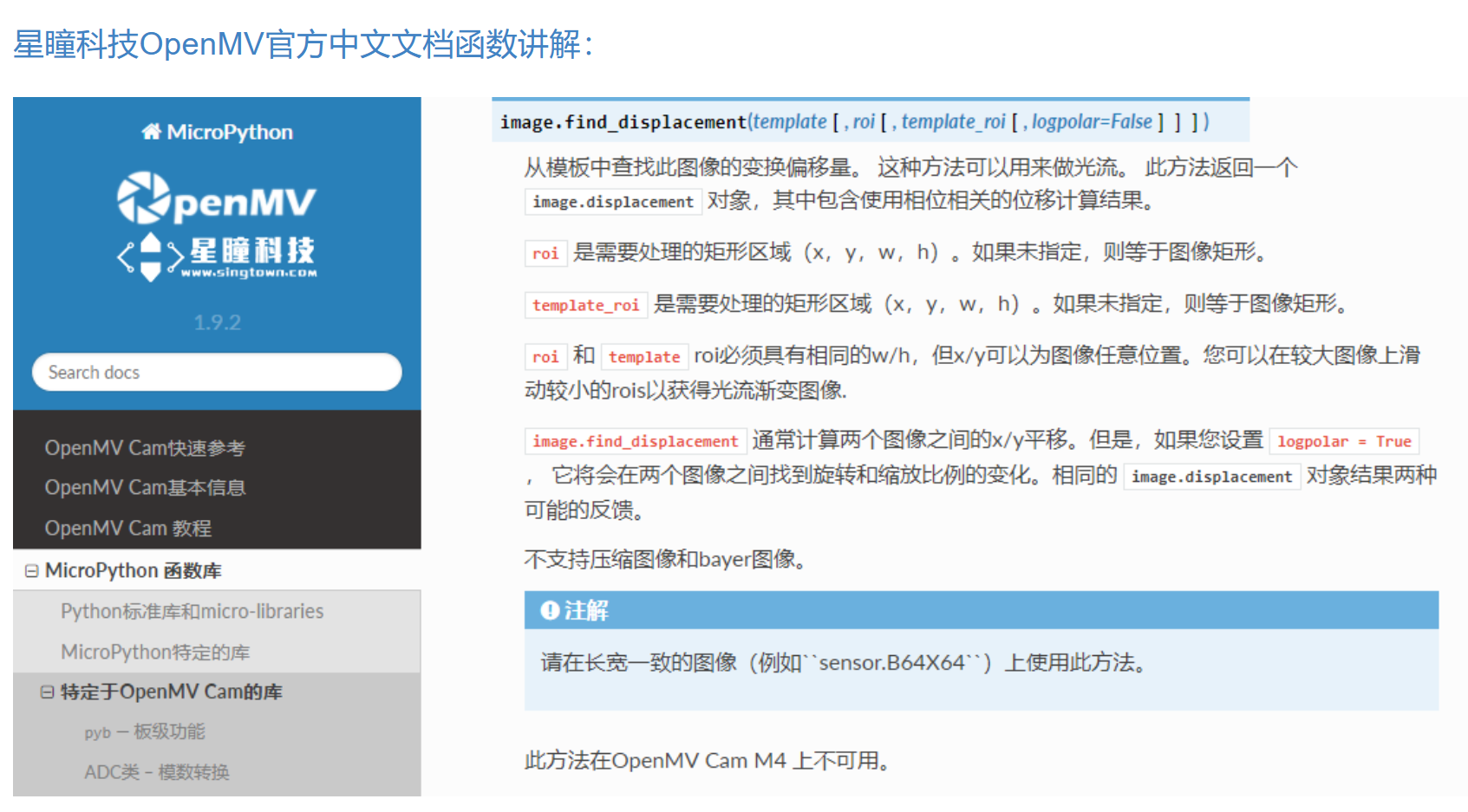系统迁移中,暂时无法访问,所有数据会迁移到新的网站。
OpenMV VSCode 扩展发布了,在插件市场直接搜索OpenMV就可以安装
如果有产品硬件故障问题,比如无法开机,论坛很难解决。可以直接找售后维修。
发帖子之前,请确认看过所有的视频教程,https://singtown.com/learn/ 和所有的上手教程http://book.openmv.cc/
每一个新的提问,单独发一个新帖子
帖子需要目的,你要做什么?
如果涉及代码,需要报错提示与全部代码文本,请注意不要贴代码图片
必看:玩转星瞳论坛了解一下图片上传,代码格式等问题。
例程18里代码最下面的sub_pixel_x,sub_pixel_y指的是速度吗?单位是多少?
-
# 通过mavlink实现光流 # # 该脚本使用MAVLink协议向ArduPilot / PixHawk控制器发送光流检测,以使用您的OpenMV Cam进行位置控制。 # # P4 = TXD import image, math, pyb, sensor, struct, time # 参数################################################################# uart_baudrate = 115200 MAV_system_id = 1 MAV_component_id = 0x54 MAV_OPTICAL_FLOW_confidence_threshold = 0.1 # 低于0.1左右(YMMV),结果只是噪音。 ############################################################################## # LED 控制 led = pyb.LED(2) # Red LED = 1, Green LED = 2, Blue LED = 3, IR LEDs = 4. led_state = 0 def update_led(): global led_state led_state = led_state + 1 if led_state == 10: led.on() elif led_state >= 20: led.off() led_state = 0 # 链接设置 uart = pyb.UART(3, uart_baudrate, timeout_char = 1000) # 辅助工作 packet_sequence = 0 def checksum(data, extra): # https://github.com/mavlink/c_library_v1/blob/master/checksum.h output = 0xFFFF for i in range(len(data)): tmp = data[i] ^ (output & 0xFF) tmp = (tmp ^ (tmp << 4)) & 0xFF output = ((output >> 8) ^ (tmp << 8) ^ (tmp << 3) ^ (tmp >> 4)) & 0xFFFF tmp = extra ^ (output & 0xFF) tmp = (tmp ^ (tmp << 4)) & 0xFF output = ((output >> 8) ^ (tmp << 8) ^ (tmp << 3) ^ (tmp >> 4)) & 0xFFFF return output MAV_OPTICAL_FLOW_message_id = 100 MAV_OPTICAL_FLOW_id = 0 # unused MAV_OPTICAL_FLOW_extra_crc = 175 # http://mavlink.org/messages/common#OPTICAL_FLOW # https://github.com/mavlink/c_library_v1/blob/master/common/mavlink_msg_optical_flow.h def send_optical_flow_packet(x, y, c): global packet_sequence temp = struct.pack("<qfffhhbb", 0, 0, 0, 0, int(x), int(y), MAV_OPTICAL_FLOW_id, int(c * 255)) temp = struct.pack("<bbbbb26s", 26, packet_sequence & 0xFF, MAV_system_id, MAV_component_id, MAV_OPTICAL_FLOW_message_id, temp) temp = struct.pack("<b31sh", 0xFE, temp, checksum(temp, MAV_OPTICAL_FLOW_extra_crc)) packet_sequence += 1 uart.write(temp) sensor.reset() # 复位并初始化传感器。 sensor.set_pixformat(sensor.RGB565) # Set pixel format to RGB565 (or GRAYSCALE) #设置图像色彩格式,有RGB565色彩图和GRAYSCALE灰度图两种 sensor.set_framesize(sensor.B64X32) # 设置图像大小为64x32…(或64 x64)… sensor.skip_frames(time = 2000) # 等待设置生效。 clock = time.clock() # 创建一个时钟对象来跟踪FPS帧率。 # 从主帧缓冲区的RAM中取出以分配第二帧缓冲区。 # 帧缓冲区中的RAM比MicroPython堆中的RAM多得多。 # 但是,在执行此操作后,您的某些算法的RAM会少得多...... # 所以,请注意现在摆脱RAM问题要容易得多。 extra_fb = sensor.alloc_extra_fb(sensor.width(), sensor.height(), sensor.RGB565) extra_fb.replace(sensor.snapshot()) while(True): clock.tick() # 追踪两个snapshots()之间经过的毫秒数. img = sensor.snapshot() # 拍一张照片,返回图像 displacement = extra_fb.find_displacement(img) extra_fb.replace(img) # 没有滤波,偏移结果是嘈杂的,所以我们降低了一些精度。 sub_pixel_x = int(-displacement.x_translation() * 35) sub_pixel_y = int(displacement.y_translation() * 53) if(displacement.response() > MAV_OPTICAL_FLOW_confidence_threshold): send_optical_flow_packet(sub_pixel_x, sub_pixel_y, displacement.response()) print("{0:+f}x {1:+f}y {2} {3} FPS".format(sub_pixel_x, sub_pixel_y, displacement.response(), clock.fps()))
-
这个代码我不知道,你可以参考这里:https://forums.openmv.io/t/python-script-to-output-mavlink/217/30
-
@kidswong999 好的
